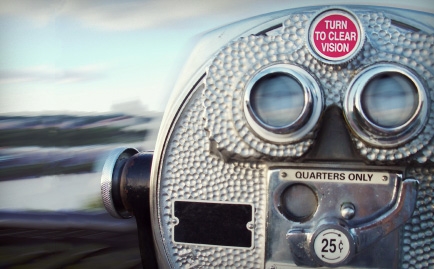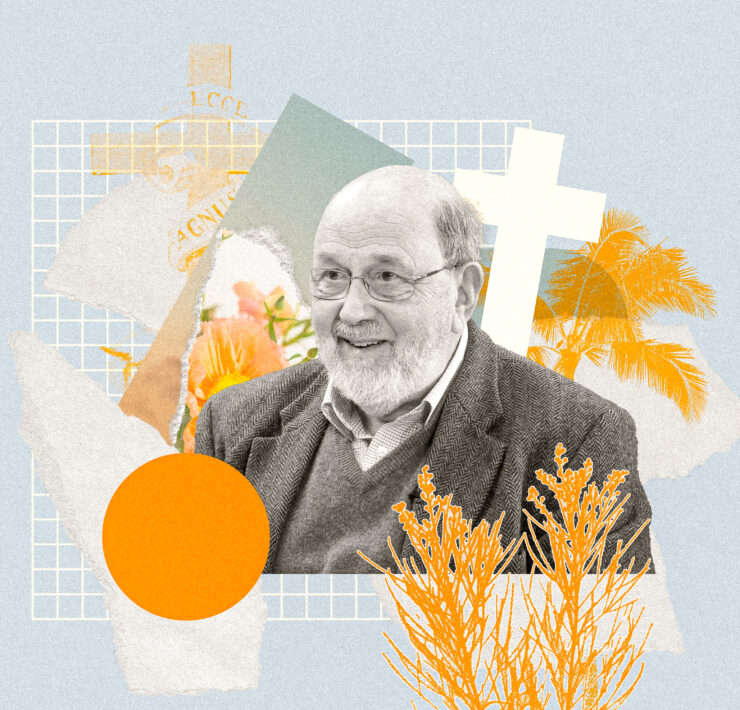Although perfectly unqualified, I was once hired for a modeling job. The pay was good, so I took the work and drove three hours to the location of the shoot. When I arrived, I was escorted to a holding room filled with beautiful people. In one corner of the room was the wardrobe department, in another corner were hair and makeup and at the other end of the room sat the models.
Everyone looked as if Michelangelo had sculpted them from marble. The men were tall, with broad shoulders and pronounced jaw lines. The women were all Helen of Troy types and were probably used to having men fight for their affection, or even just a little eye contact. I felt like some homely outsider who wandered in off the streets and stumbled onto the set of America’s Next Top Model. I was certain people were looking at me asking, “Who ordered pizza?”
Panic began to set in. A group broke out into spontaneous dance next to the snack table while others changed clothes in plain sight. The panic grew. I’ve never been a great dancer, and I had no intention of taking my shirt off with all those six-packs watching. I glanced over to the hair and makeup corner and noticed the stylist running her fingers through the hair of one of the models. Then it hit me: I didn’t wash my hair. There was no scenario in which I was going to let her run her fingers through my dirty locks. The panic attack was in full swing now, and before I knew it I was telling someone in charge that I had to leave. She had a clipboard and a walkie-talkie and stared blankly back at me. I apologized and headed for the exit. I went through a drive-through, bought a chocolate-dipped ice cream cone and began the long drive back home.
Our fixation with body image has been challenged in recent years, especially given the rise of eating disorders. Isabelle Caro, a French model and actress, died on Nov. 17, 2010, after battling anorexia for 15 years. She was 28. At five feet four inches, Caro’s weight had dropped to 60 pounds. Her whisper of a frame had become so shocking that her image was used for an anti-anorexia campaign in Milan.
But the Barbie body isn’t everyone’s gold standard. In places like Uganda and Mauritania, overweight women set the bar for beauty. A bride-to-be will often prepare for the wedding day by eating copious amounts of food in “fattening huts.” It’s a far cry from the pressures of staying thin, but this expectation of beauty comes with its own burdens, most notably of which is force feeding.
Interpretations of beauty vary from place to place, but the burdens and pressures of beauty are universal. In Thailand, fair skin is the apex of beauty, and people have been known to use bleaching creams in order to acquire the coveted pale complexion. In other parts of the country, tribal women wear brass rings around their necks in order to weigh down their shoulders and elongate their necks. The collection of rings often weighs in at more than 20 pounds. In New Zealand, the Maori tribe associates beauty with tattoo-covered lips and chins. Beauty in Ethiopia is a painful process. Women of the Karo are cut on their stomachs in order to create scars. Following the scarring process, they’re considered more desirable. In Indonesia, women wrap a 65-foot long piece of fabric around their bodies to shape their figure. It’s called a stagen, similar in function to a corset.
Clearly, “beauty” is a word with many definitions, and the pressures involved in achieving that word are everywhere and oftentimes overwhelming. The heavy yoke of beauty is propagated through most magazines, commercials, television shows and movies. A study done by Dove found that “girls who watch TV commercials featuring underweight models lose self-confidence and become more dissatisfied with their own bodies.” Although low self-esteem is more evident among women, it certainly exists among men. In fact, eating disorders among American males have doubled in the past decade.
Philosophy, science and even mathematics have all taken turns attempting to define “beauty” once and for all. But what do these definitions and explanations amount to? What do they offer to those who are buying aesthetic indulgences, believing that redemption lies in the clothes on your back or the number on a scale?
“Come to me, all who are weary and heavy-laden, and I will give you rest. Take my yoke upon you and learn from me, for I am gentle and humble in heart, and you will find rest for your souls. For my yoke is easy and my burden is light.”
Christ spoke these words to people struggling under the elitism, criticism and condemnation of the Pharisees. In a world where magazines list the sexiest people alive, at a time when yearbooks celebrate the “cutest” and “best looking” kids in school, I welcome Christ’s words like air into my lungs. For those struggling under the heavy yoke of beauty, seeking redemption in appearances, Christ’s words are for you.
Physical attraction and an appreciation for beauty aren’t bad things—just read Song of Solomon. But Scripture stresses the enduring beauty of godliness. It contrasts the eternal value of virtue with the temporary currency of good looks (see 1 Peter 3:3-4).
Unlearning the burden of beauty and removing its heavy yoke is no easy task. But there are a number of ways to challenge our skewed perceptions of beauty. Maybe you fast from the mirror for a week, or limit yourself to a few items of clothing for a month. Do what you must to be free of arbitrary and burdensome standards of beauty—and rest in Christ.





















